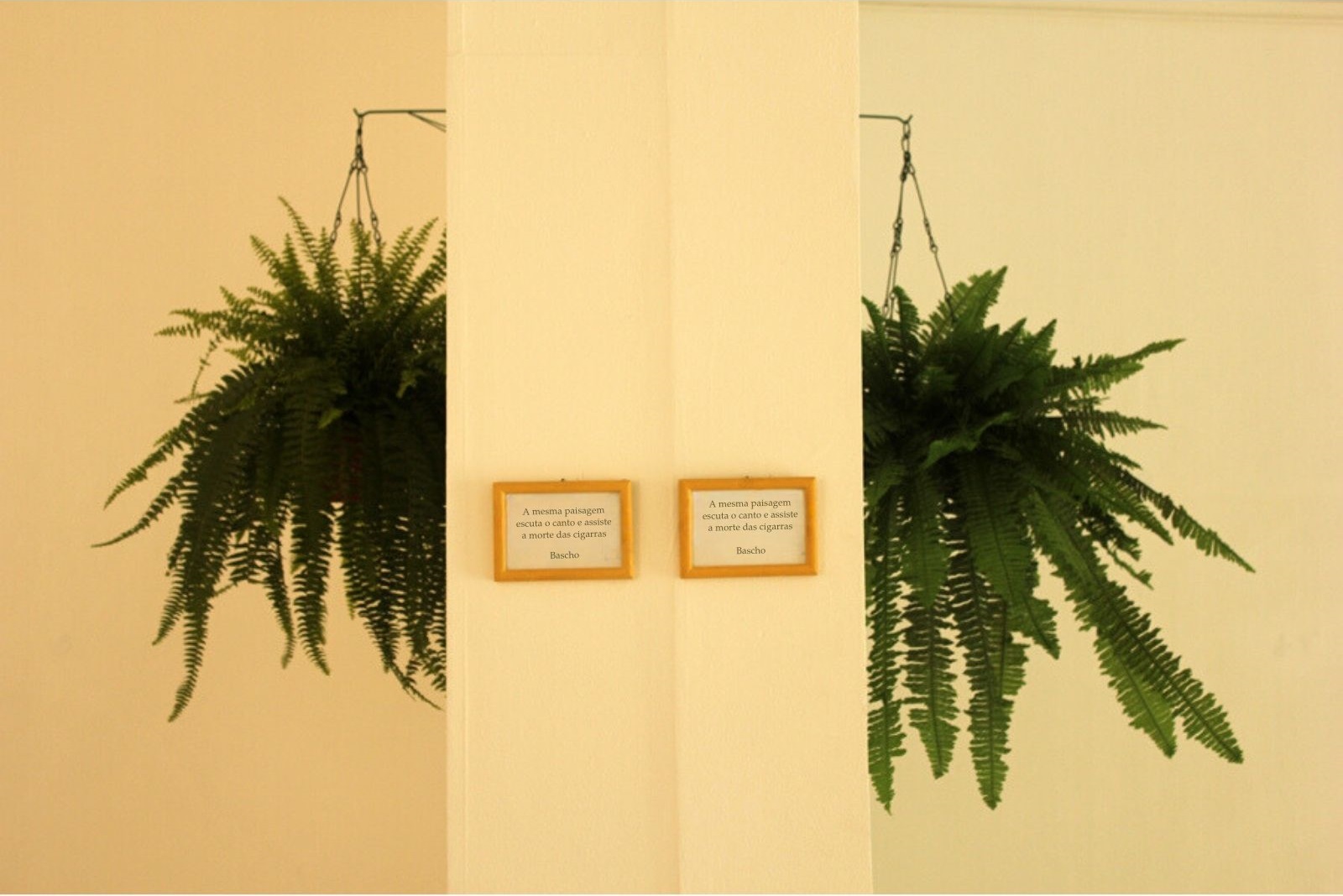Qual é o estilo das questões de interesse? Duas conferências sobre filosofia empírica
Conteúdo do artigo principal
Resumo
Tornou-se de grande interesse investigar a história do que Whitehead chamou de "bifurcação da natureza". Esta história é possível desde que conectemos a história da arte com a história da ciência para investigar as razões pelas quais a distinção entre qualidades primárias e secundárias tem sido considerada tão central desde a época de Locke até os debates atuais em torno do "naturalismo". Essas conferências tentam esboçar essa história, definindo assim um segundo empirismo na linha do proposto por William James, que é definido mais por "questões de interesse" do que por "questões de fato", cuja estética muito peculiar está sendo explorada.
Downloads
Detalhes do artigo

Este trabalho está licenciado sob uma licença Creative Commons Attribution-NonCommercial 4.0 International License.
Autores que publicam nesta revista concordam com os seguintes termos:
Autores mantém os direitos autorais e concedem à revista o direito de primeira publicação, sendo o trabalho simultaneamente licenciado sob a Creative Commons Attribution License o que permite o compartilhamento do trabalho com reconhecimento da autoria do trabalho e publicação inicial nesta revista.
Autores têm autorização para assumir contratos adicionais separadamente, para distribuição não-exclusiva da versão do trabalho publicada nesta revista (ex.: publicar em repositório institucional ou como capítulo de livro), com reconhecimento de autoria e publicação inicial nesta revista.
Autores têm permissão e são estimulados a publicar e distribuir seu trabalho online (ex.: em repositórios institucionais ou na sua página pessoal) a qualquer ponto antes ou durante o processo editorial, já que isso pode gerar alterações produtivas, bem como aumentar o impacto e a citação do trabalho publicado.
Referências
ALPERS, Svetlana. The Art of Describing. Chicago: University of Chicago Press, 1983.
ASHMORE, Malcolm; EDWARDS, Derek; POTTER, Jonathan. The Bottom Line: the Rhetoric of Reality Demonstrations. Configurations. pp. 1-14, 1994.
CRARY, Jonathan. Techniques of the observer. On vision and modernity in the nineteenth century. Cambridge, Mass: MIT Press, 1990.
DEBAISE, Didier. Un empirisme spéculatif: Lecture de Procès et Réalité. Paris: Vrin. 2006.
DIJKSTERHUIS, E.J. The Mechanization of the World Picture Pythagoras to Newton. Princeton: Princeton University Press, 1961.
DESCOLA, Philippe. Par delà nature et culture. Paris: Gallimard, 2005.
FLECK, Ludwig. Genesis and Development of a Scientific Fact. Chicago: The University of Chicago Press, 1981.
HARTMANN, Frank Hartmann. “Humanization of Knowledge through the Eye” In: LATOUR, Bruno; WEIBEL, Peter (ed.) Making Things Public. Atmospheres of Democracy. Cambridge, Mass: MIT Press, 2005, pp. 698-707.
IVINS JR., Williams M. On the rationalization of sight: with an examination of three Renaissance texts on perspective. De artificiali perspectiva, [The artificial perspective]: reproducing both the first edition (Toul, 1505) and the second edition (Toul, 1509). New York: De Capo Press e Plenum Press. pp 8-9, 1973.
LATOUR, Bruno. Drawing Things Together. In: LYNCH, Mike; WOOLGAR, Steve (ed.) Representation in Scientific Practice. Cambridge, Mass: MIT Press, 1990.
_____. Gabriel Tarde and the End of the Social. In: JOYCE, Patrick (ed.) The Social in Question: New Bearings in History and the Social Sciences. Londres: Routledge, 2002.
_____. Politics of Nature: How to Bring the Sciences into Democracy. Cambridge, Mass: Harvard University Press, 2004.
_____. Why Has Critique Run Out of Steam? From Matters of Fact to Matters of Concern. Critical Inquiry, v. 30, n. 2, pp. 15-20, 2004.
_____. From Realpolitik to Dingpolitik. How to Make Things Public. An Introduction. In: LATOUR, Bruno; WEIBEL, Peter Weibel (ed.) Making Things Public: Atmospheres of Democracy. Cambridge, Mass: MIT Press, 2005.
_____. Reassembling the Social. An Introduction to Actor-Network Theory. Oxford: Oxford University Press, 2005.
_____. What is Given in Experience? A Review of Isabelle Stengers ‘Penser avec Whitehead. Boundary 2. pp. 222-237, 2005.
LATOUR, Bruno; WOOLGAR, Steve. Laboratory Life. The Construction of Scientific Facts. 2ª ed. Princeton: Princeton University Press, 1986.
LATOUR, Bruno; WEIBEL, Peter. (ed) Iconoclash. Beyond the Image Wars in Science, Religion and Art. Cambridge, Mass: MIT Press, 2002.
_____. Making Things Public. Atmospheres of Democracy. Cambridge, Mass: MIT Press, 2005.
LOCKE, John. Ensaio sobre o entendimento humano. (Coleção Os Pensadores) São Paulo: Abril Cultural, 1978.
_____. Ensaio sobre o entendimento humano. 5ª ed. Lisboa: Fundação Calouste Gulbenkian, 2014.
MILOSZ, Czeslaw. A Theological Treatise. Spiritus: A Journal of Christian Spirituality, v. 2, n. 2, Outono, The Johns Hopkins University Press, pp. 123- 204, 2002.
SLOTERDIJK, Peter. Foreword to the Theory of Spheres. In: OHANIAN, Melik; ROYOUX, Jean Christophe (ed.) Cosmograms. New York: Lukas and Sternberg, 2005.
STENGERS, Isabelle. L’effet Whitehead. Paris: Vrin, 1994
_____. The Invention of Modern Science. Minneapolis: University of Minnesota Press, 2000.
_____. Penser avec Whitehead: Une libre et sauvage création de concepts. Paris: Gallimard, 2000.
TARDE, Gabriel. Social Laws: An Outline of Sociology. Traduzido por Howard C. Warren. Kitchener: Batoche Books, 2000.
_____. Monadologia e Sociologia e outros ensaios. Tradução de Paulo Neves. São Paulo: Cosac Naify, 2007.
UEBEL, Thomas E.; CARTWRIGHT, Nancy; FLECK, L. Otto Neurath: Philosophy Between Science and Politics. Cambridge: Cambridge University Press, 1996.
WHITEHEAD, Alfred North. Concept of Nature. Cambridge: Cambridge University Press, 1920.
_____. Modes of Thought. New York: The Free Press, 1938.
_____. Science and the Modern World. New York: Free Press, 1967.
_____. O Conceito de Natureza. Tradução de Julio B. Fischer. São Paulo: Martins Fontes, 1994.
_____. A Ciência e o mundo moderno, São Paulo: Paulus, 2006.

